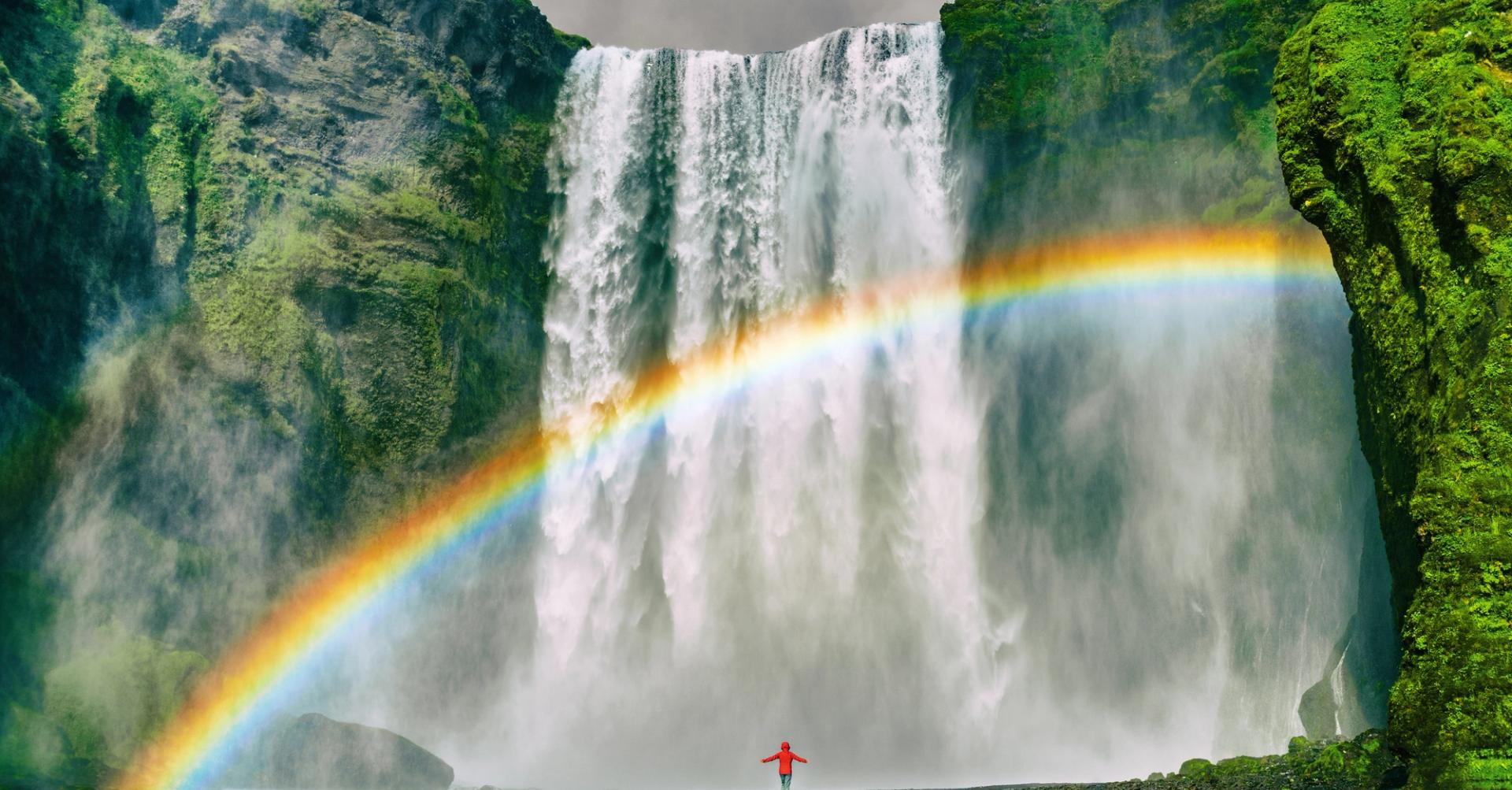 Guides
GuidesGuide to Driving Iceland’s Golden Circle (with map)
Everything you want to know about driving Iceland's Golden Circle, the most famous route in Iceland. Imagine driving through a stunning countryside to see spouting geysers and hot springs, towering waterfalls, and important cultural sites. And you can do it all at your own pace. If that sounds incredible, choose the best route for your visit with our complete Golden Circle guide and map.
What is the Golden Circle?
Iceland’s Golden Circle is a well-traveled 190-mile tourist route that takes you on a journey through Iceland’s most breathtaking natural landscapes and rich cultural heritage. Explore amazing natural wonders, like bursting geysers and roaring waterfalls, all while driving yourself along Iceland’s most scenic road trip.
Golden Circle in Iceland is a loop route beginning in Reykjavik. It includes attractions like the majestic falls of Gullfoss, water jets reaching towards the heavens erupting from the Haukadalur Geothermal Fields, and land’s edge where two continents meet. In addition, cultural relics like the origin of education in Iceland and where Parliament gathered have added cultural landmarks to experience Iceland’s history en route to the next wonder.
Driving the Golden Circle
Experience the wonders of the Golden Circle Iceland at your own pace with your rental car. Self-driven tours are the best way to truly take your time at each landmark and add your personal touch to your itinerary with other intriguing stops.
Here are some general facts to keep in mind when driving on the Golden Circle in Iceland:
- Golden Circle distance: 190 miles (300 km)
- Time to complete: 3-4 hours (7-8 hours when including stops)
- Speed Limits:
- Cities/Developed Areas: 50 kph (~31 mph)
- Open Road: 80 kph (~49mph)
- Highway: 90 kph (~55mph)
The "Big 3" stops on the Golden Circle in Iceland are Þingvellir National Park, the Geysir Geothermal Area, and the Gullfoss Waterfall. The travel distances between these landmarks are:
- Reykjavik to Þingvellir National Park: 25 miles
- Þingvellir National Park to Geysir Geothermal Area: 38 miles
- Geysir Geothermal Area to Gullfoss: 6 miles
- Gullfoss to Reykjavik: 66 miles
Parking is available at each of the Golden Circle landmarks, usually just a few steps away from seeing the main attractions. So, feel free to get out of the car and enjoy each stop fully.
Things to see in the Golden Circle
In addition to its ‘Big 3’ attractions, plenty of other small towns, businesses, and landmarks are located on the route. These are the landmark stops that form the Golden Circle.
Down here you can see the Iceland Golden circle map:
- Þingvellir National Park
Marked by its cultural significance and geological beauty, Þingvellir National Park is the jewel of Iceland. It is one of the most visited sites in Iceland for sightseeing, outdoor recreation, and learning about the rich Icelandic history.
Geological phenomena have transformed the volcanic landscape of Þingvellir National Park. Dramatic cliffs emerge from the ground, grassy fields cover broad valleys, and rushing waterways carve their way through the Earth.

Straddle yourself between two continents at the Silfra Fissure. Hike the gorge or scuba dive the frigid waters that separate the North American and European continents. Hiking trails leading to Öxarárfoss waterfall lets you see the mighty falls plunging into the rocks below. Or take a route towards Thingvallavatn Lake, the largest in Iceland.
There’s lots of history to uncover in Þingvellir National Park. Stand on the historic site of the ancient annual parliament assembly at Alþing and stop for a moment at the Hakið visitor center for in-depth exhibitions about the nation’s history.
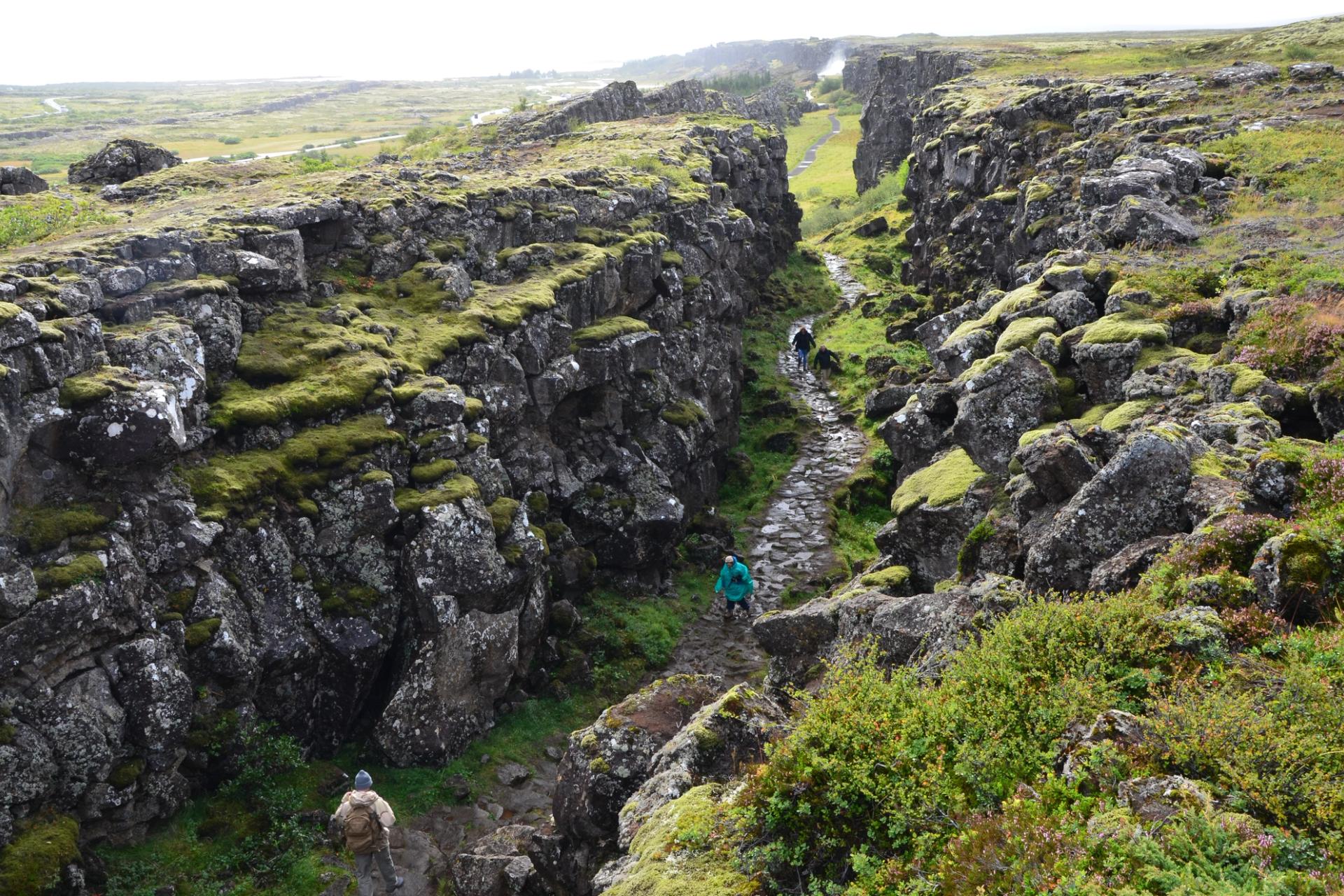
- Geysir Geothermal Area
The sound of water bubbling into a bursting eruption is quickly followed by the exclamations of “ahh!” from the crowd witnessing the natural wonder. Squeeze your way to a front-row spot to see nature’s explosive water show.
Beneath the surface of Iceland is tons of volcanic activity warming up its natural features. Sitting in a volcanic area, Geysir Geothermal Area is an entire field dotted with geysers and hot springs. Steam rising from the field lets you know that the ground is warmed up and getting ready for another spectacle.
The Great Geysir earned fame after earthquakes caused its water to shoot as high as 122 feet. Its eruptions are infrequent, however. You’ll undoubtedly capture excellent photos of Strokkur Geysir. Join the crowd circling the geyser for the timed eruption every 5-10 minutes as boiling water jets out of the Earth to heights upwards of 65 feet.
Parking is available at Geysir Geothermal Area. Just be prepared for the odor caused by sulfur which you’ll smell when you arrive.

- Gullfoss Waterfall
There is always a rainbow hovering over the Gullfoss Waterfall. Even on the sunniest day in Iceland, the mist cloud rising from the thundering falls keeps enough moisture in the air to form views of the color spectrum. Fun fact: The Golden Circle is named after the waterfalls, and they are one of the ‘Big 3’ landmarks on the route.

Glacial water melting from Langjökull Glacier topples over the ledge into the Hvítá Canyon. It’s the largest waterfall in Iceland (by volume) and drops 105 feet. The stunning spectacle resembles a staircase as the two-tiered falls drop 36 feet then 69 feet.
The roaring boom of the water drowns out the world while immersing you in the photo-worthy setting with surrounding grassy-topped cliffs. One of the best times to visit Gullfoss Waterfall is when the sun is out. The sun’s reflection on the waters earns the name the ‘Golden Falls.’
- Secret Lagoon
The Golden Circle has made the quiet town "Flúdir" a huge tourist attraction. The Secret Lagoon is a secret that is impossible to keep to yourself once you experience it.
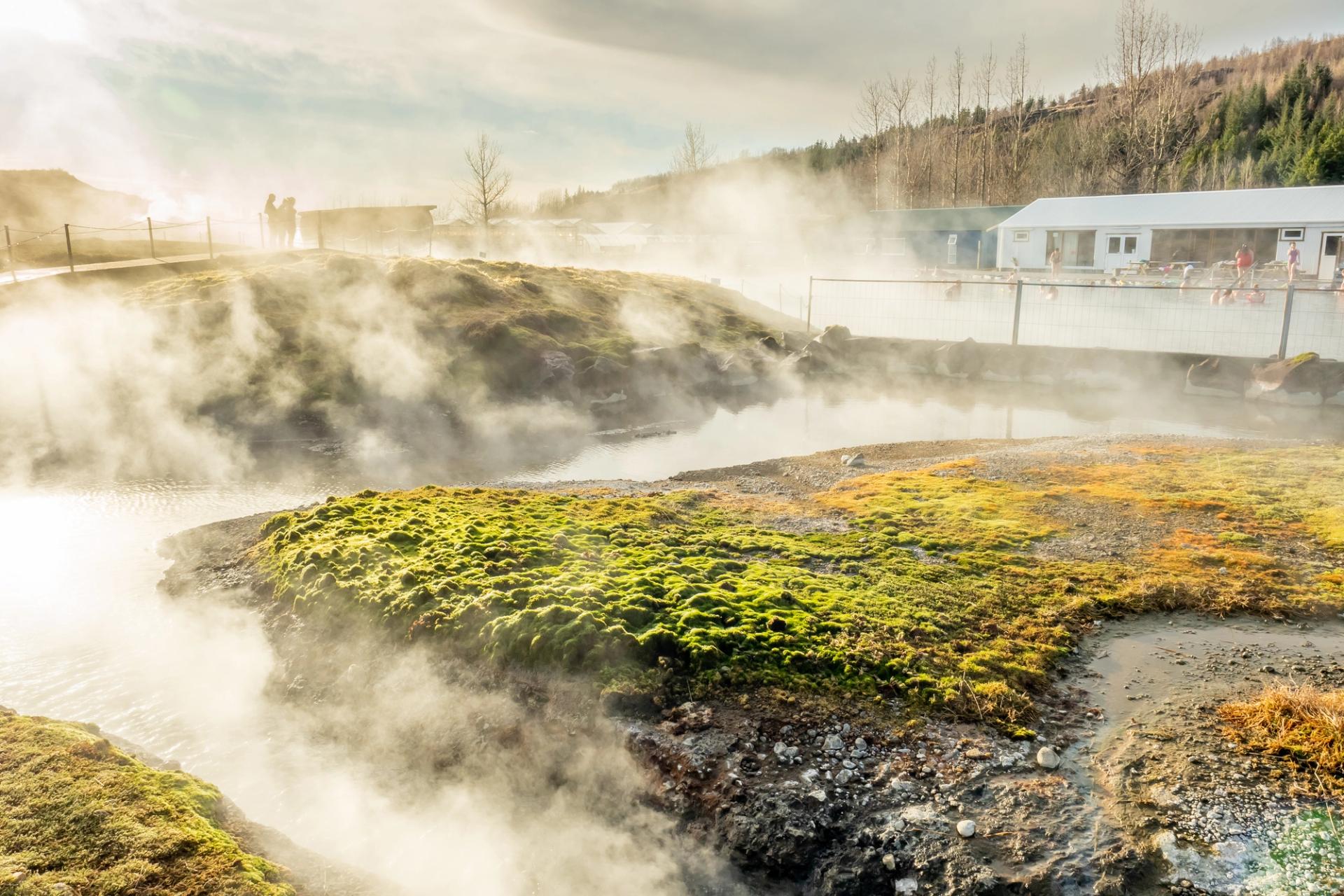
Secret Lagoon is nature's hot tub, and one of Iceland’s best natural hot springs. Water from nearby hot springs and geysers fills the pool at temperatures averaging 100-104°F for a geothermal bath. Nature gives you the perfect setting to relax, soak up the warm waters, and enjoy breathtaking views of the Icelandic landscape.
Initially built in 1891, Gamla Laugin is Iceland's oldest swimming pool. However, its natural setting has been prioritized and left untouched. Grassy hills set the backdrop as you climb over the ledge boulders to get into the pool. Nearby steam spouts confirm that the water temperatures are perfect for entering. If you stick around until the night, you can even catch a glimpse of the northern lights flashing overhead.
Secret Lagoon has visitor facilities, including a shower to rinse off before returning to your car and a snack bar for treats as you continue your trip around the Golden Circle.
- Skalholt
The unassuming town of Skalholt is actually one of the most important cultural hubs in Iceland. Unlike the natural landmarks discovered on the route, It’s one of the Golden Circle attractions that explore a heritage site of the nation.

The unassuming town of Skalholt is one of the most important cultural hubs in Iceland. Unlike the natural landmarks you'll see on your drive in Iceland, Skalholt is one of the Golden Circle attractions that explore the rich cultural heritage of Iceland.
Drive into town, and the iconic Skalholt Cathedral is one of the most prominent buildings in Iceland. The current church was built in 1963, although it's the tenth church built on the site. Guided tours inside the cathedral let you examine its unique architecture, explore the museum with exhibitions covering its history, and see the current excavations of its surrounding ruins.
In addition to the holy site, Skalholt is home to the first school in Iceland. Skálholtsskóli was built in 1056 and continues to host visitors as a cultural center with events and activities. And if you're traveling with kids, stop by the Slakki Petting Zoo for hands-on fun with piglets, rabbits, calves, and other friendly animals.
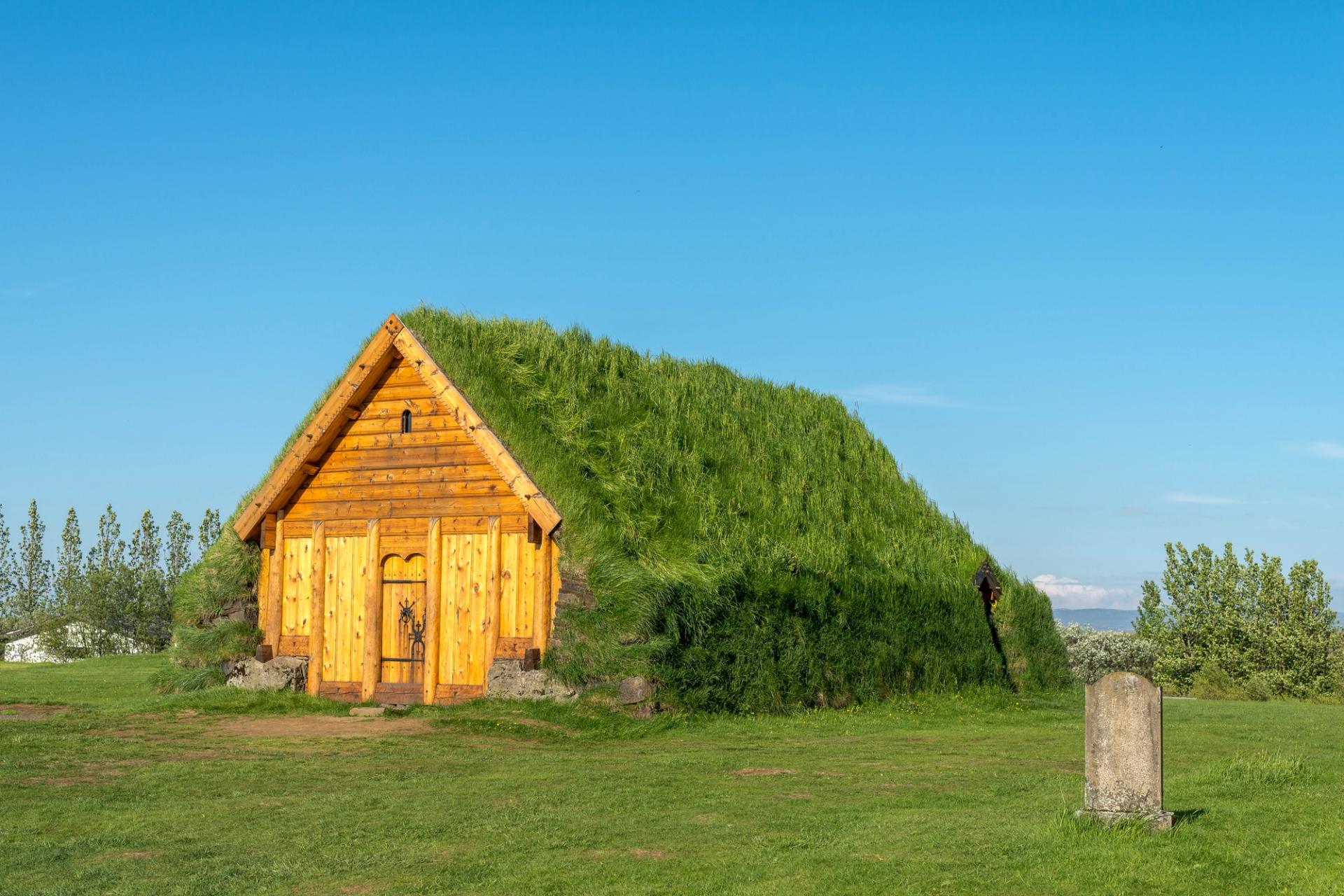
- Kerid Crater
A stop by Kerid Crater will reveal one of Iceland's most photographed landmarks in Iceland. The vibrant colors emanating from this volcanic crater lake make it one of the most breathtaking sights in Iceland.
Nature took nearly 3,000 years to create something as marvelous as the Kerid Crater. It's part of the Tjarnarhólar regions of the Western Volcanic Zone of Iceland. However, it's only remnants of a past volcano, not a meteor strike.
Stand on the lip of the open Kerid Crater as it slopes 180 feet deep into a sky-reflecting emerald green pool. The pool walls uniquely showcase red volcano rocks as intense green grass patches attempt to hide them. Hike around the 885-ft wide crater to get a vantage point from every angle or carefully descend to the lakeshore.
Make this a stop on your Golden Circle journey to see what makes the scenery so captivating for photographers and nature lovers.

Tips for traveling the Golden Circle
It’s not every day you find yourself traversing the illustrious landscapes of Iceland, so it’s best to be prepared to make the most of it while you’re there! Here are a few quick tips to remember before, during, and after your Golden Circle excursion:
- Most people drive the Golden Circle in Iceland to explore in a clockwise pattern starting with Þingvellir National Park. However, since it’s a loop trail, it can also be driven counter-clockwise, which will take you to Gullfoss first. Keep in mind that this is a longer initial drive to your first attraction.
- Iceland drives on the right side of the road (same as the US), and much of the road during the trip is only two lanes.
- Make sure to check and fill up on gas before you leave Reykjavik.
- Be sure to bring a camera! Whether you use your smartphone or an expensive camera, you’re going to want to document this bucket list adventure.
- Leave Iceland better than you found it. Golden Circle takes you to many of the island’s celebrated landmarks. Take care not to disturb nature or drive off designated paths.
Best time to visit the Golden Circle Iceland
Considering the best time to visit the Golden circle in Iceland? Nature is unpredictable, especially in a destination like Iceland. Depending on the season you visit can give different experiences at each of the landmarks. Golden Circle is accessible all year long, so here’s what you can expect during each season:
Summer – Peak season (June-August)
With long days and plenty of sunshine, summer is one of the best times to visit the Golden Circle. You can take your time at each stop and see each landmark in the best light. However, since it’s peak season, expect to see many other tourists at each site. Rental cars and tour buses fill the roadways, and you might need to wait a moment to snap that perfect photo.
Fall – The best time to visit (September-November)
As the summer crowds start to travel home and the weather stalls just before it cools for the winter, fall is an ideal time for a Golden Circle Road Trip.
Winter – Low Season
The weather isn’t as intense in the southern Iceland region, so drivers can still be found on the Golden Road. However, with the colder temperatures, you might encounter frozen waterfalls, barren trees, and views of snow-capped mountains in the distance. Winter can be one of the most magical times to visit the Golden Circle to see the amazing landmarks illuminated by the Northern Lights.
Spring – Good time to visit
Go on a springtime day trip on the Golden Circle to see nature rebirthing after a long winter. As a shoulder month, it’s a period just before the summer tourist rush, and nature showcases its vibrant colors. It’s a time to see wildflowers decorating the lush valleys, waterfalls at full force, and more.
The Golden Circle Iceland FAQ
What is the difference between the Golden Circle Iceland and Ring Road Iceland?
The main tourist routes in Iceland are the Golden Circle and Ring Road. The Ring Road is the main road stretching around the country for 828 miles. It’s a multi-day road trip that includes all regions and the Iceland coast. Golden Circle is a smaller day-trip route that’s 190 miles long. It shares a section with Ring Road but focuses on the South Iceland region.
How do you get to the Golden Circle Iceland?
The Golden Circle in Iceland is a loop around South Iceland. Most people start at Reykjavik and make the loop from the capital city.
How long do you need to visit the Golden Circle Iceland?
Driving the Golden Circle nonstop will take approximately 3-4 hours. Tourists who plan to visit the landmarks and attractions should factor in a few extra hours when planning their trip. Most people complete the Golden Circle as a day trip.
Are Golden Circle tours available?
Tours are one of the best ways to experience the Golden Circle. Visitors can rent a car for a self-drive tour, hire a private driver, or join a tour with a pre-set itinerary. Duration and prices vary depending on the tour.
Are you ready to hit the road and explore the golden circle? Book your rental car in Iceland with Go Car rental and let us help you plan your Golden Circle trip!
Latest Blog Posts
 Guides
GuidesThe 2022 Eruption of Fagradalsfjall Volcano - An Unforgettable Iceland Volcano Eruption
Iceland has become a top destination for mind-blowing mountain hikes, volcanic hot springs, and icy glaciers. Adventurers flock to the land of fire and ice to experience these thrilling opportunities! So it is no wonder why Iceland's volcanic eruptions attract visitors from all over the world!
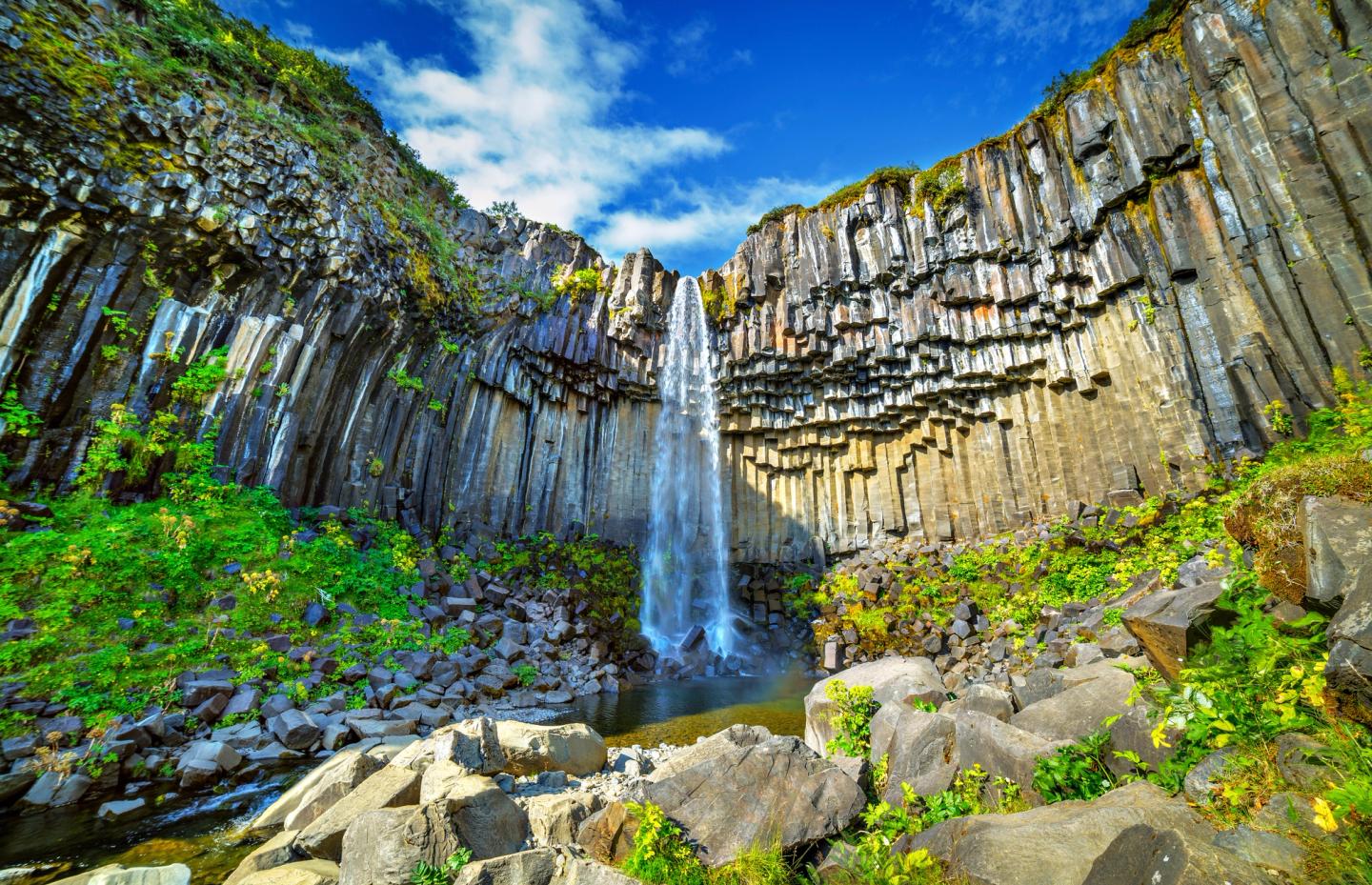 Waterfalls
WaterfallsGuide to Svartifoss Waterfall in Iceland
Svartifoss, or the 'Black Waterfall', is an exquisite natural wonder tucked away in the Vatnajökull National Park of Iceland. Known for its distinctive basalt columns and cascading water, this waterfall is a must-see for nature lovers and travelers.
 Itineraries
ItinerariesTop 11 Must-Visit Volcanic Sites in Iceland
Iceland has over 130 volcanoes located throughout the country, with 30 of them still active today. Some of them are famous for recent volcanic eruptions, while others have not erupted in thousands of years. There are so many notable Iceland volcanoes, it is hard to know which ones you can visit. With the nickname of The Land of Fire and Ice, you know you won’t be disappointed when it comes to Iceland's volcanic sites. Here are our top 11 must-visit volcanic sites in Iceland!